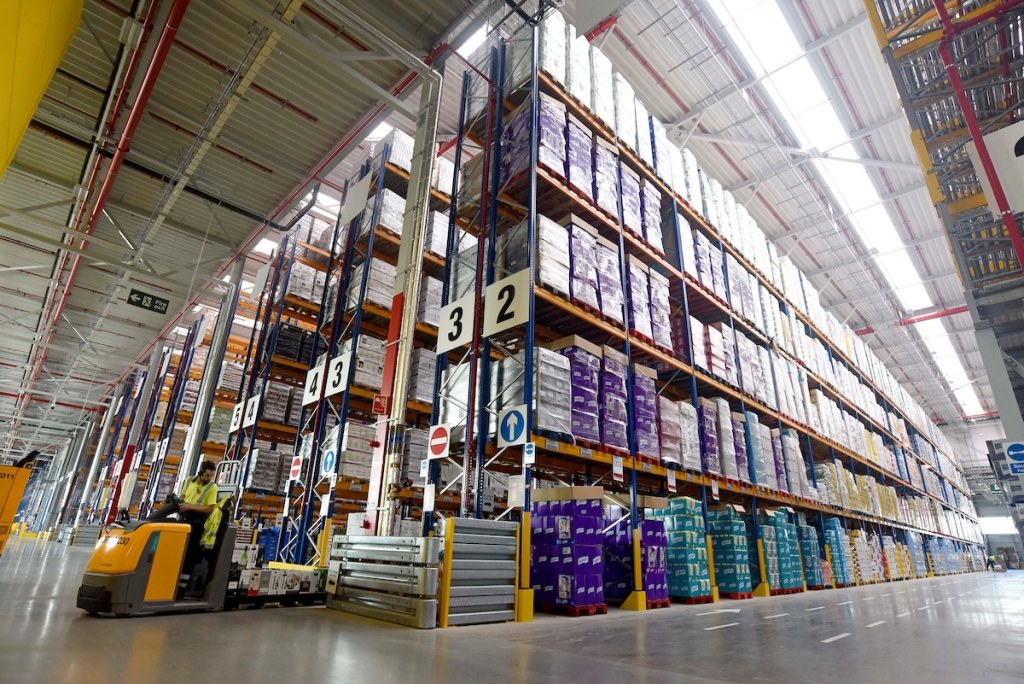The importance of perishables and those who sell and transport them has immensely grown during the course of the COVID-19 pandemic. While the domestic demand has surged in the last few years for many food products, Indian shippers have been facing major issues including unskilled manpower, shortage of reefer trucks, capacity crunches and inadequate cold storage facilities. So the question is how to make India’s perishable logistics market deliver, writes Ritika Arora Bhola
In India, ‘Perishables’ is believed to be the only commodity whose demand remained unhindered even during the disastrous crisis like COVID-19 pandemic. From Himachal Pradesh’s red apples, West Bengal and Uttar Pradesh’s famous potatoes, fresh dairy products to meat and poultry—the demand for perishables country-wide didn’t get affected and in fact, recorded an upsurge in growth in the last few years.
In fact, Indian consumers have also appreciated the undisrupted access to fresh foods especially during the lockdowns, even though the fears of potential food shortages, led some already nervous consumers to panic buying, which actually added pressures on the supply chains.
Notwithstanding the plethora of challenges thrown upon by the pandemic, the domestic perishables logistics industry did a commendable job of continuing with the robust and resilient supply chains of fruits and vegetables and other perishable products.
Key factors which have significantly contributed to this growth are Indian government’s ambitious plans and incentives and new focus on food preservation and transportation.The government has also laid out elaborate plans and incentives to support large scale investments essential for developing an effective and integrated cold chain infrastructure.
According to the reports, Indian cool chain industry will attract more overseas partners in the coming years to learn more about the market so as to take full advantage of the emerging opportunities.
In next 4-5 years Rs 21,000 crore is also believed to be invested in setting up or upgrading cold storages to address the problem of stockpiling of perishable commodities.
According to Crisil Research, investment of Rs 16,000-21,000 crore is being lined up in the sector between 2020 and 2023 for optimising the domestic post-harvest value chain and to feed the downstream food processing industry.
What drives Long-Run Growth?
According to Sanjay Sharma, Vice President- Corporate Sales and Distribution, Coldman Logistics, “Indian cuisine traditionally revolves around eating fresh and hence perishables play a significant role in Indian household. Moreover, the COVID-19 made Immunity the new buzzword making people consume more fruits and vegetables and hence we have been a significant jump in demand for perishables like fruits and vegetables. Our biggest challenge though, is to ensure that we make our reach from farm to household more efficient and faster ensuring least of wastage during transit and intermediary channels and keeping the freshness intact.”
“The pandemic has placed unprecedented stresses on food supply chains across farm labour, processing, transport, and logistics. It even created a momentous shift in demand. The perishables market was the most impacted,” says G Gopi, Regional Business Manager– South, Snowman Logistics.
“At present, as the situation is getting relaxed, there is an increase in the trade of perishable commodities at the global level. The ease of cross-border movement and government regulations are also enabling smooth trading, resulting in significant growth. Today, technological advancements in refrigerated systems, particularly technological solutions introduced by refrigerated transport service providers for reducing the environmental impact has also enabled ease of operations. Integration of multi-temperature systems is further projected to create growth opportunities for refrigerated transport service providers and frozen and chilled food product manufacturers.”
The demand for perishable goods has rapidly grown due to following reasons, as B Sumit Kumar, CEO, TCI Cold Chain Solutions points out:
- Change in people regarding the habit of taste. Nowadays, we see both husband and wife equally employed and hence home cooking is taking a back seat, giving way to increase in food delivery business.
- Also, we are witnessing the assortments and quality, which is available in online delivery business far higher than from the conventional local outlets. This is giving good boost to demand.
- Besides, people are becoming more quality concerned and hence organic and vegan foods, etc. are also boosting the demand.
Despite various challenges like capacity issues, less reefer trucks, inadequate infrastructure for cold storage facilities, etc. a study by Crisil expects the cold storage industry to grow at a CAGR of 13-15 per cent over fiscals 2020-23, mainly driven by rising demand for processed food, fresh fruits and vegetables, and seafood and bio-pharmaceuticals in exports markets.
Currently, 95 per cent of the cold storages are owned by the private sector, 3 per cent by cooperatives and the remaining 2 per cent by the public sector undertakings.
Since, bulk of the capacity is owned by the private sector, there is greater need for the central and state governments to rise up to the occasion and support the beleaguered industry, says industry analysts.
The current cold storage capacity in India is pegged at 37-39 million tonnes (MT). According to official statistics, there are about 7,645 cold storages in the country with 68 per cent of the capacity being used for potato, while 30 per cent is multi-commodity cold storage.
According to another recent study conducted by the Central Institute of Post-Harvest Engineering and Technology (CIPHET), India has wasted a whopping 16 per cent of its fruits and vegetables every year due to a weak cold chain infrastructure.
Analysts in this segment, say that the Indian perishable market requires around 1.5 to 2 lakh reefer trucks to meet the needs of perishables movement within the country.
“The beauty of logistics is that it shall reach wherever it smells demand. While LSPs are in every corner of the globe, the challenge for perishables in our country is the lack of intent to quality over price and this changes the whole game,” highlights Sharma.
“Perishables need a defined environment like temperature and humidity to sustain its quality and enhance its shelf life. This aspect is often overlooked at all channels of distribution leading to high level of wastage which costs more as compared to marginal investment on quality.”
Sharma is hopeful that over the next few years, demand for quality products by consumers will drive the logistics market for perishables and even tier II and tier III cities will see emergence of quality LSPs.
Kumar feels, the weakest link is the strength of the entire supply chain. “Normally when volume is sufficient then there are relatively lesser issues with regard to transportation. But, when it comes to lesser volume or erratic supply, it becomes challenging to provide best quality supply chain. We see in the case of tier II and III cities consistency of volume and leveled supply chain is a major challenge.”
“When the transport companies come with vanilla transport solution, it really creates panic into the system. Then and there, we need to see as how alternative methods can be applied to address these challenges. For example, one can use multi-temp vehicle where all type of perishables (frozen, chilled, and ambient) can move in one truck or use of passive cooling than active cooling methods like eutectics capsules. So, a dry truck can be converted to temperature-controlled truck by way of these recent technologies as and when needed.”
Taking cue of the same, “One of their largest concerns has always been the under-utilisation of the existing fleet and cold storages,” points Swarup Bose, CEO, Celcius Logistics Solutions.
“Due to the lack of a central network, a lot of the transporters are operating under losses as they have to wait for extended periods before their vehicles are loaded for a return trip. Moreover, the assets in the cold chain industry are 2.5 times more expensive than their counterparts in the dry logistics sector. There is a gap between the existing capacity and the requirement of an effective perishable logistics infrastructure.”
Bose argues that capacity shortage can be fulfiled if private participation is aggressively encouraged by the government.
“Perishable cargo spoilage due to insufficient and weak cold perishable logistics infrastructure is a problem. However, that issue can be addressed by adopting a public-private partnership (PPP) model to develop refrigerated transport infrastructure,” he adds.
Gopi agrees. “Transportation is the most challenging function in cold chain logistics. There is a gap between the existing capacity and the requirement of an effective perishable logistics infrastructure— warehouses, temperature-controlled trucks, LCVs, etc. across India.”
“Also, there are many incentive schemes available from the government for cold chain storage set up, but no viable schemes available for transportation at present,” Gopi says.
Importantly, according to Gopi, transporting perishables requires temperature-controlled environment till last-mile delivery. Given the small package sizes of products between tier II and III cities, the large costs incurred in transportation makes conventional solutions unviable for most stakeholders and forces them to break the cold chain or use potentially hazardous substances like dry-ice especially towards consumer/retail end of the chain. This severely impacts product quality.
Snowman, Gopi informs, has designed solutions especially for catering to small volume locations where there are no cold storages (small towns, talukas, villages, etc.) by using refrigerated containers, reach in freezers, etc. for effective temperature-controlled deliveries.
Government and stakeholder Initiatives and Updates
In the last few years, various efficient schemes and incentives have been laid out by the Indian government and private authorities for developing highly reliable and efficient cold chain infrastructure for transportation of perishables.
- Last year, the government introduced three new farm laws: Farmer’s Produce Trade and Commerce (Promotion and Facilitation) Bill, 2020; Essential Commodities (Amendment) Bill 2020; and Farmers (Empowerment and Protection) Agreement of Price Assurance and Farm Services Bill, 2020.
- The scheme for integrated cold chain and value-addition listed under the Pradhan Mantri Kisan SAMPADA Yojana of the Ministry of Food Processing Industries (MoFPI) is said to boost the cold chain industry by facilitating the development of infrastructure facilities at the farm level.
- The farm to fork solution has got a huge boost by the new farm laws, which allows value addition at the farm-gate.
- MoFPI has also helped set up more food processing plants while the National Horticulture Board (NHB) and the Agricultural and Processed Food Product Export Development Authority (APEDA) have helped increase the infrastructure of cold chain facilities.
- To promote growth in the industry, the government has been providing a lot of subsidies and incentives. The ‘Make in India’ initiative has bolstered manufacturers from India’s tier II and III cities.
- Getting approvals from the government has also become less time consuming and cold chain entities are getting priority over other sectors.
- Government had been encouraging new start-ups and logistical giants to increase their presence in the cold chain segment. Start-ups are even receiving funding to increase the production of agricultural goods while maintaining the quality of their organic products.
Reports indicate, MoFPI is striving to establish an integrated and seamless network of cold chain grid and infrastructure for the uninterrupted transfer of perishables from production to consumption areas/centres. This would maintain the safety, quality, and quantity and storage of perishable produce such as fruits and vegetables, dairy products, meat, fish marine, poultry, ready to eat food products.
MoFPI recently announced that 27 projects were approved in Inter-Ministerial Approval Committee (IMAC) meetings under the scheme for cold chain, value-addition and preservation infrastructure of PMKSY.
The projects have been approved across the states of Andhra Pradesh, Bihar, Gujarat, Haryana, Karnataka, Kerala, MP, Punjab, Rajasthan, Tamil Nadu, and Uttar Pradesh. These 27 new integrated cold chain projects will leverage a total investment of 743 crores for the creation of modern, innovative infrastructure and effective cold chain facilities for the food processing sector across the nation. These projects with a grant-in-aid of Rs 208 crores will help increase efficiency and sustainability in India’s food supply chain.
In fact, as many as 85 cold chain projects have been considered for financial assistance throughout the country to boost the government’s efforts towards bridging the gap in supply chain and building world-class cold chain infrastructure.
Recent findings by real-estate consulting firm CBRE stated that the cold storage segment in India is expected to witness significant growth over the next few years on the back of a strong consumer and industrial base. Following the COVID-19 outbreak, the demand for cold storage is being further fueled by a wider omnichannel distribution of food & grocery (F&G) across tier I and II cities in the country.
The overall cold storage real-estate stock in India is estimated to reach 1,400–1,500 million sq ft by 2023. The projected growth of F&G retail, dairy, food processing, and pharma industry over the next few years is likely to drive demand for cold storage and reduce product wastage. The emergence of the ‘cloud kitchen’ concept is also likely to boost demand for cold storage facilities.
CBRE has previously stated that government initiatives aim to reduce post-harvest waste, encourage investment, and improve logistics efficiencies to boost the overall cold storage capacity, value and RE stock.
Investment flows to developing India defy COVID-19
Indian perishables logistics market has gained immense foreign interest in the last few years mainly because the industry is believed to present vast opportunities for foreign companies to explore and invest more in this sector.
Leading international LSPs like Kuehne+Nagel, DHL, DP World, DB Schenker, etc. have been transporting perishables to and from the country. Consequently, Indian government and private authorities have also done incredible investments in improving the cold chain logistics infrastructure, which has caught the attention of the foreign investors.
“The cold chain industry is very big but mostly dominated by the unorganised players. International players can explore opportunities with organised players who can help them to expand their presence at national level or for getting into tier II and III cities,” Gopi says.
“In fact, perishable logistics market is huge and offers immense growth potential for all players.”
“Foreign companies can definitely play a significant role in bringing the knowledge and expertise on how to extend the shelf life of the products and create a demand for regional specific commodities globally,” also feels Sharma.
“Let’s take an example of a very basic technology called ‘pre-cooling’ which enhances the shelf life of fresh vegetables by multiple times but this is hardly been seen in use in our country. Each commodity needs a different kind of pre-cooling process to enhance its life but we are hardly using any. We can benefit from their knowledge and technique and ensure significant reduction in our food wastages,” he enlightens.
“Indian perishable logistics sector may be unorganised, but not necessarily gives vast opportunity,” feels Kumar.
“One needs to understand that the wastage in India is at the farm level. When farmer sees that the rate what he is getting is lesser than the transport cost from farm to the Mandis, he scraps produce at farmland itself. But all said and done, there are avenues where there is definite opportunity in better quality crop (global standards) and higher produce per hectare of land with new technology like drones, AI, and use of other advanced resources.”
“There is also scope in improving energy consumption and space optimisation in terms of storage, also there can be avenues to shift to ammonia-based refrigerant to CO2-based refrigerant, which is more environmentally-friendly.”
According to sector experts, the transition from conventional operational dynamics to the modern way of functioning has changed the face of perishable logistics in the last few years. And, despite the pandemic-induced operational challenges, the perishable logistics segment has witnessed significant growth.
However, in order to keep up with the growth momentum, the government needs to work upon skilling and training manpower employed in the industry. The government should also work towards aggressively attracting foreign investments in this sector. Offering subsidy on electricity tariffs to develop perishable logistics infrastructure is another route the government should explore.
Acknowledging the same, Kumar says, “Perishable logistics is growing double digits year-on-year. It is considered to be the pandemic and recession proof industry so relatively safe compared to other fields.”
Kumar highlights a few futuristic trends:
- Multilevel inventory management leading to increased demand for warehousing space: Post-COVID-19, companies are trying to manage their inventory in a more practical way. To avoid supply disruption companies are holding higher inventory as buffer/safety stock (both for raw materials and finished goods) that too at multiple locations.
- Diversification of sourcing arrangements and focus on greater localisation: In post-COVID-19 world, the companies are diversifying their sourcing arrangements to avoid supply disruptions. The unavailability of suppliers during the pandemic has forced companies in several instances to look out for local suppliers in each region where they operate.
- Increased outsourcing to 3PL players by manufacturing companies: The Indian logistics industry has been experiencing a structural change in the past five years after GST, E-WayBill, and grant of infrastructure status. Supply chain operations are shifting from small unorganised players to large pan-India players who are integrating with the global supply chains for imports and exports. 3PL has gained wide acceptance in developed world and is evolving in India.
- Multimodal transport solutions: The focus of the government was always to create seamless multimodal transfers to ensure efficient freight movement. The government always provided thrust to move long-haul cargo through more efficient modes such as railways, coastal shipping, and waterways, with first- and last-mile connectivity by road.
What it Means and to Whom it Matters!
Being a fast-moving category, the perishables supply chain requires much advanced technology intervention to ensure minimum spoilages.
“Perishable logistics is still in its nascent stage and would take another 3-5 years to create its impression among the primary users. Creation of quality infrastructure at the farm gate level will bring a huge transformation to this sector. The emerging technologies like solar based cold rooms, PCM-based technology and product traceability applications will define the future of perishable logistics,” Sharma notes.
“Demand is the biggest incentive for any business to thrive upon. We should look beyond financial incentives to create a sustainable cold chain infrastructure. We need to create demand for cold chain by educating the farmers and intermediary channels and the financial benefits they can derive by using an efficient cold chain logistics. Over the years, we have seen a marginal improvement in understanding the benefits of cold chain beyond potato and onions.”
“Organised retail and e-commerce has played a significant role in making users understand the significance of cold chain in ensuring quality products. Government and agricultural bodies can also play a significant role in bridging this knowledge gap, enabling the sector to grow beyond conventional commodities,” Sharma goes on.
Between adversities and hindered quality, Snowman has rise up to be the leader and always remained ahead and adapted well to the changing trends and in terms of integrating technology. The company has successfully incorporated a world-class ERP system that enables real-time traceability and complete tracking of trucks from Gate in/Gate out that helps optimise warehousing operations with 100 per cent inventory accuracy.
Further, in-vehicle and chamber temperature monitoring with alert systems ensures secure and timely measures for absolute accuracy and real time updates, thus, enhancing the customer experience.
Snowman has also introduced an online aggregation platform (SNOWLINK) that has enables it with fast and accurate responses from partners/shippers.







